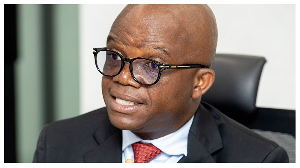Rural poverty is the poverty found in the rural areas. Rural economy and rural
political system among others give rise to the poverty in the rural areas. Rural
poverty is one of the great evils of the modern world. Poverty refers to a
situation whereby a certain group of related people keep on undergoing a state
of lack of basic needs like food, shelter, health, electricity, road
accessibility, telephone services and clothing time in and time out. Although
there has been a substantial overall decline in the incidence of poverty in
Ghana, poverty still has a firm grip on rural areas, especially in the north.
In recent years, Ghana has become one of the developing countries in the
western and central African region It has developed its economy on a scale that
could enable it to meet the Millennium Development Goals (MDGs) before the 2015
deadline.
In Ghana, rural poverty has become a great nemesis in the country making the
poor peoples and the deprived regions to live in absolute low standard of
living. Just over half the country’s population lives in rural areas. The
poorest parts of Ghana are the savannah regions of the north (the Northern,
Upper East and Upper West regions), where chronic food insecurity is widespread
and livelihoods are more vulnerable. There is also a wide disparity in income
between people living in the drought-prone northern plains, and those living in
the south, where there are two growing seasons and greater economic
opportunities.
There is spatial unbalanced development in the country; this development comes
in the form of economic, social, political and even cultural or religious
levels. This is in real terms because taking into consideration the development
pattern of the country, the development level of the southern part of the
country is higher than that of the northern part. Mean while in Ghana the total
population as in 2008 was about 23,350,927.0, the total population of those
living in rural areas was about 11,670,793.3, and among these peoples about
4,574,951.0 are poor.
Another fact that can not be left out is the unequal technology advancement
within the country. The northern part of the country is popularly known for
farming ,which most of them are small scale subsistence farmers and even these
farmers lack infrastructure and equipment for storing, processing and marketing
their products. The technology levels within southern part of the country are
higher than the technology levels in the northern part of the country. The
northern part produces a lot of agricultural products such as kola nuts, yam,
groundnut and also cattle etc, and therefore can not be left out in terms of
technology because the use of technology will help in the increment of the
already producing products. This technology can be in the form of irrigational
system, modern form of fertilizer application etc.
Education is also a major factor that has added to the level of rural poverty
within the country. The educational structure within the country has been as it
is since the time of colonialism when the elites (the colonial masters) and the
rich only live and work and also educate their children in the big cities which
are all concentrated in the southern part of the country. As the Executive
Director of the Danquah institute , Gabby Asare Otchere Darko said, the
necessary things that can help the youth of today is through the equipment of
education, skills, and jobs. Without these things, poverty in the rural areas
can not be alleviated.
In order to overcome their present state of living, the government and
non-governmental agencies must come to their aid in the form of helping them
market their products and transfer of resources in concessional terms-terms that
are more" softer" or generous than loans obtain in the world's capital market.
ARTICLE BY
LAMPTEY ALFRED
POLITICAL SCIENSCE 2
KNUST.
ALFREDLAMPTEY88@YAHOO.COM
Opinions of Wednesday, 6 October 2010
Columnist: Lamptey, Alfred














